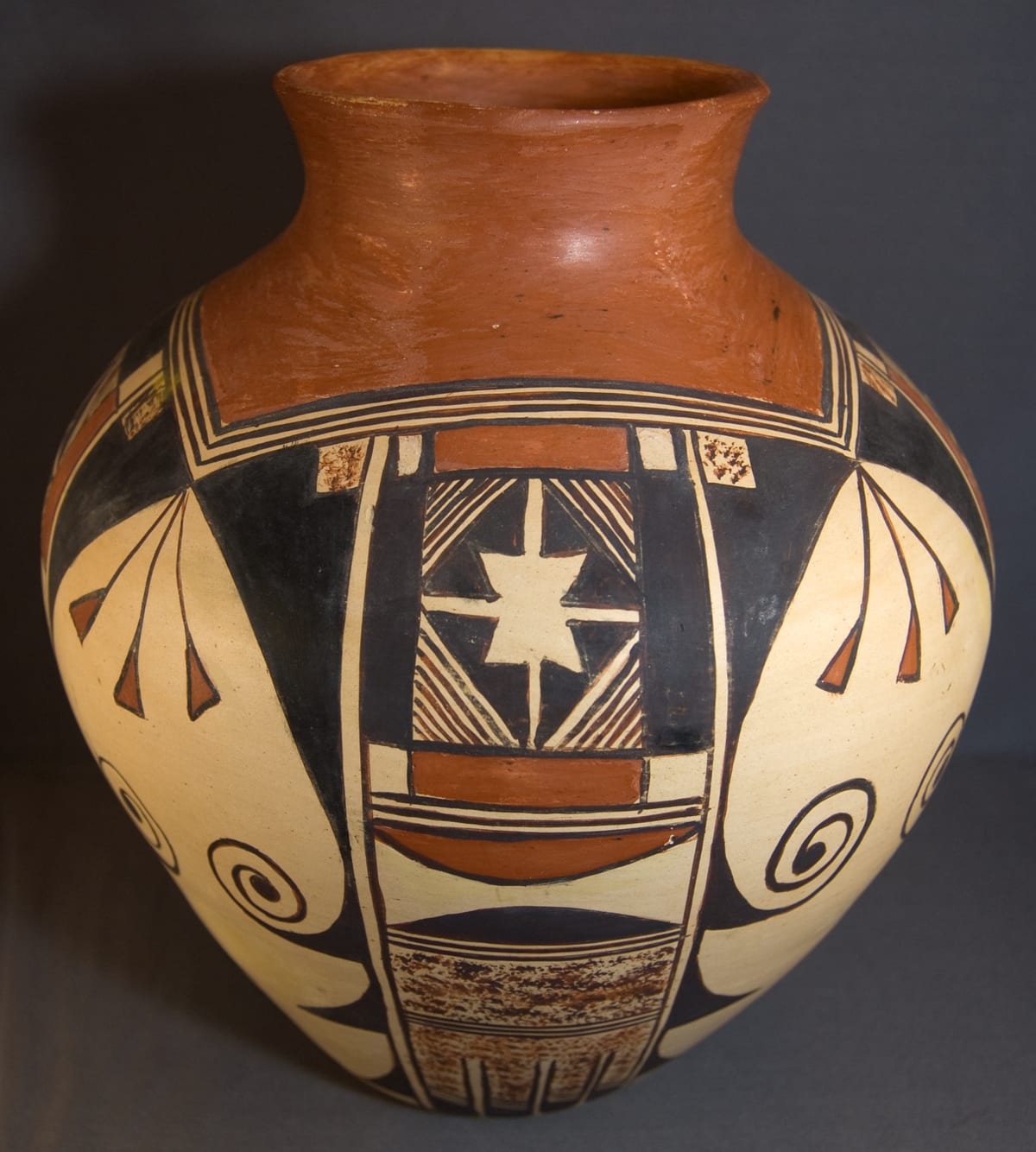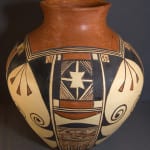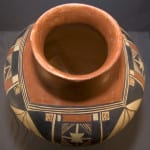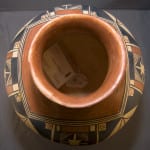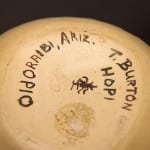Vase 2011-11 is kiln-fired and thus the undecorated, unpainted areas have a pale, blank look. The four linear sections of the design above four “tails” are busy, visually crowded and somewhat static. In contrast, the four sets of curvilinear “wings” are light and float in space. Especially effective are the three “feathers on string” (or perhaps” leaves on twigs”) that hang above each wing motif. These “feathers” are not symmetrical, giving these elements the feeling of blowing in the wind and conveying to the whole pot a lightness of motion.
Pot 2011-11 is the second painted pot from Third Mesa in the collection; the other is also by Treva Burton. The eagle-tail design on this pot is a Sikyatki Revival motif made famous by Nampeyo. (See 2005-16 and category listing for other pots in the collection with the eagle-tail design.) Lydia Wyckoff, in her study of Third Mesa pottery, calls Sikyatki Revival designs “Style B.” The other Burton pot in this collection (2010-06) is clearly “Style A.” Wyckoff argues that the difference in styles reflects fundamental differences in world views by Third Mesa potters: “Style A” is used by “traditionalist” potters, “Style B” by “progressive” potters. That the two pots by Treva Burton use different style motifs challenges this conclusion. (See the description for pot 2010-06 for the full argument.)

